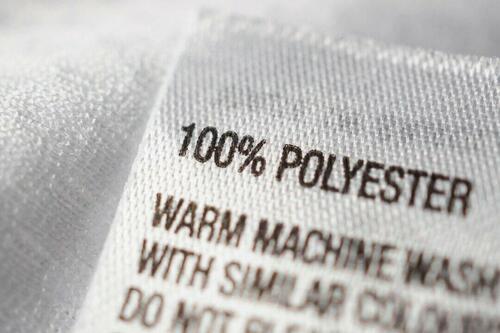Authored by Rachel Ann T. Melegrito via The Epoch Times (emphasis ours),
The shirt on your back, the carpet beneath your feet, and the takeout container from last night’s dinner share a troubling secret: They’re slowly breaking down into invisible particles that are turning up everywhere from Mount Everest’s peak to your bloodstream.
 Kwangmoozaa/Shutterstock
Kwangmoozaa/ShutterstockThese microscopic plastic fragments, ranging in size from invisible to no larger than the width of a pencil eraser, have silently invaded human bodies in ways scientists are only beginning to understand—and the implications are unsettling, according to a September scientific review.
“Microplastics pose a significant health risk, as they can persist in the environment and carry harmful chemicals,” Dr. Paul Savage, a toxin expert and founder and CEO of MDLifespan, told The Epoch Times.
“A person might consume the equivalent of a credit card in plastic each week through food alone,” he said. “Once ingested, these particles can degrade into nanoplastics small enough to interfere with cellular DNA, potentially leading to genetic damage and chronic health issues.”
Each year, between 10 and 40 million tonnes of microplastics are released into the environment. If current trends persist, this amount is projected to double by 2040.
Even if all new emissions are stopped today, existing microplastic levels would continue to rise as older plastic debris breaks down into smaller particles.
A review published in Science summarizes the current understanding of microplastic pollution two decades after the term “microplastic” was first introduced.
How Microplastics Enter Our Bodies
Microplastics are solid plastic particles measuring less than 5 millimeters (smaller than a pencil-top eraser). They permeate ecosystems, seeping into our food and water, and have found their way into our bodies.
Microplastics mainly come from larger plastics breaking down but can also be released by plastic recycling, textiles, tires, paint, clothing, and soft furnishing.
Many people do not realize that clothes are made of plastics, Aidan Charron, associate director of Global Earth Day, an organization dedicated to diversifying, educating, and activating the environmental movement worldwide, told The Epoch Times.
“Fast fashion is all made with polyester, nylon, spandex, etc.,” Charron said. “Fast fashion” is the mass production and sale of low-cost clothing. “Another ’secret' product often made of plastic textiles are carpets, curtains, and bedding,” he added, noting that these materials shed microplastics and toxic chemicals into the air we inhale.
“They tend to be some of the most harmful because of the shedding of fibers they do into our air and waterways once washed,” he said. One study found that over 90 percent of microplastics indoors consist of polyester and manmade fiber, both derived from plastic.
Microplastics can enter our bodies through various means:
Microplastics in the Human Body
Research indicates that microplastics have infiltrated various parts of the human body, including:
While evidence that microplastics accumulate in the body exists, research on their health effects is still limited.
Health Implications of Microplastics
Because microplastics are foreign bodies, they trigger an immune system response. However, unlike viruses and bacteria, the body cannot effectively eliminate them. This chronic presence may lead to oxidative stress and inflammation, potentially resulting in a range of health issues, including DNA damage, allergic reactions, cell death, and cancer.
Microplastics also contain chemicals that can disrupt normal hormone functions and metabolic processes. These harmful substances may leach from the microplastics and enter the body through skin absorption or ingestion.
“Microplastics act as vectors that also carry viruses and bacteria, which then travel into our bodies if we inhale or ingest the microplastics,” Charron said.
Research has linked microplastic exposure to an increased risk of diseases. For instance, according to the study on saliva samples, exposure may put people at higher risk of pulmonary diseases characterized by coughing, shortness of breath, wheezing, and a more severe inflammatory bowel disease. Additionally, the presence of plastic in arteriosclerotic plaques, fatty deposits that build up in the arteries, increases the likelihood of heart attack, stroke, or death.
Despite growing evidence of health risks, there is still no way to assess microplastic risks or measure human exposure.
“One major barrier is the lack of standardized testing for microplastic release in drinking water and other consumables,” Savage said. Creating such testing requires more comprehensive studies and standardized protocols to evaluate exposure levels and health impacts, he added. The challenge of measuring these particles in biological samples is due to their wide variation in size and composition.
“Improved detection methods will help researchers better understand the extent and impact of microplastics on human health, allowing for more comprehensive studies and effective intervention strategies,” he added.
Read the rest here...
Source link

